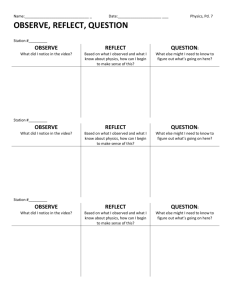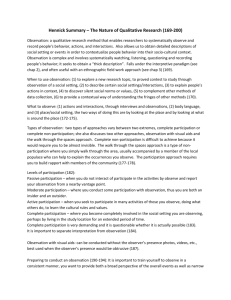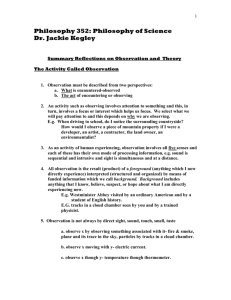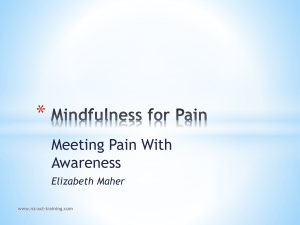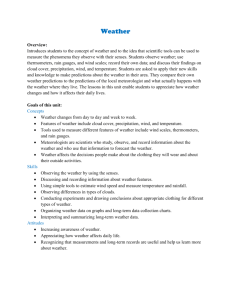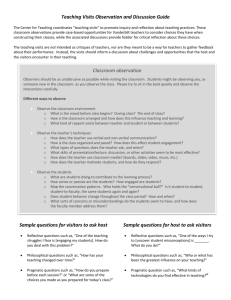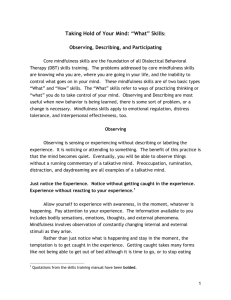Mindfulness - Scottsdale Behavioral Health, L.L.C.
advertisement
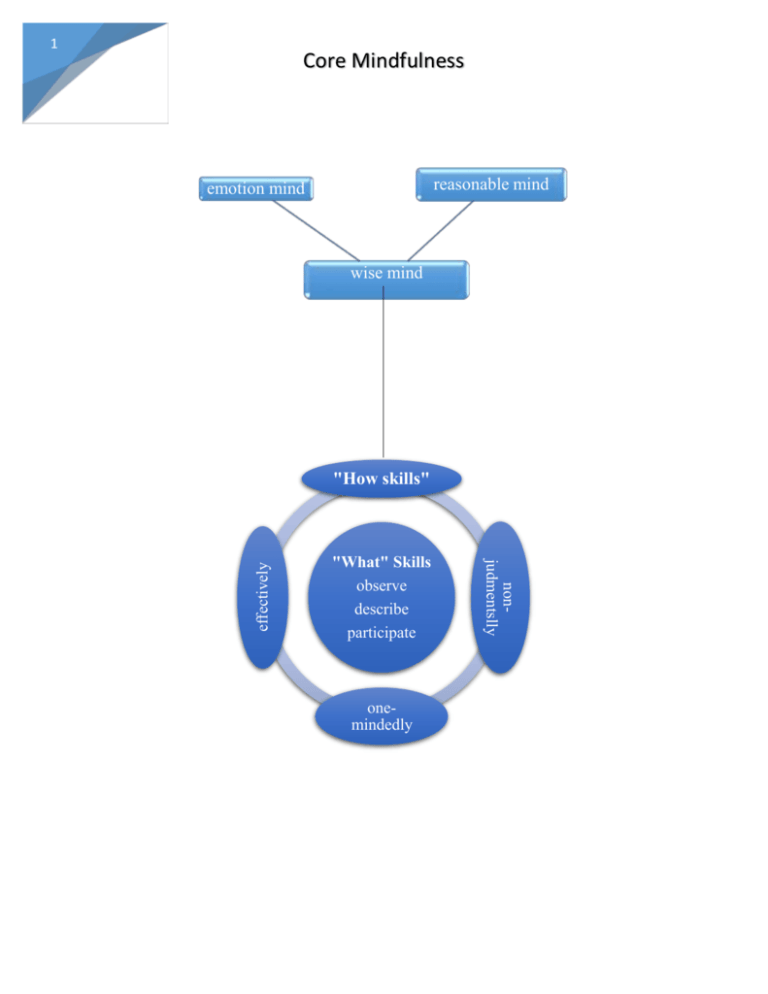
1 Core Mindfulness reasonable mind emotion mind wise mind "What" Skills observe describe participate onemindedly nonjudmentslly effectively "How skills" 2 Core Mindfulness “What” Skills First set of mindfulness is the “what” skills The “what” skills are what you do to practice mindfulness: Observe, describe or participate You only do one “What” skill at one time-- Observe, describe or participate -- but not all three at once “What” skills can be applies to any of our 5 senses as well as to our own thoughts and mental processes. 1 2 3 Observe Describe Participate 1) Observe Observing is sensing or experiencing without describing or labeling the experience. It is noticing or paying attention to direct experiences at the level of pure sensation (seeing, hearing, touching, tasting, smelling or even thoughts and feelings within your own mind) without adding concepts or categories. Since it is pre-verbal, it requires you simply to focus on only on the thing you are observing and to be attentive to it without using words or commenting inwardly or outwardly on the experience. Focus only on the thing you are observing without using words or commenting in worldly or out worldly on the experience. 2) Describe Building on the observe skill, describe involves applying descriptive labels to an observed experience while neither adding to nor subtracting from the empirical facts. If you did not observe something you cannot describe it. Which means that description can’t be applies to interpretive or unobservable events (another person’s thoughts and emotions for ex.). Applying descriptive labels to observe experiences while neither adding nor subtracting from the experienced fact. Cannot take thoughts and emotions literally. Distinguish between descriptions, judgments, interpretations, and opinions. Noting a thought as a thought an emotion as an emotion. Imagine thoughts and bodily sensations running on a conveyer belt. 3) Participate The “participate” skill involves entering completely into the current moment without separating yourself from the current moment and what’s happening. When you participate fully, you throw yourself into things and lose self-consciousness in them. Participating requires engagement and spontaneity. 3 Core Mindfulness “How” skills How skills can be used all at once. 1) Non-judgmentally – observe describe and participate without labeling or evaluation as good or bad, valuable or not worthwhile or worthless. Acknowledging helpful, wholesome, harmful, and unwholesome but not judging them. 2) One-mindedly – Fully experiencing each moment and completing activities one at a time. Bring attention to the present moment if other thoughts and feelings distract you, let go of the distractions and go back to what you are doing. Doing with all your attention. 3) Effectively – Acting as effectively as possible to meet both your needs and demands of the situation. What works and what needs to be done. Keeping an eye on the on objectives and doing what is necessary to achieve them. Let go of the need to be “right”. Abandoning vengeance and useless anger. “Playing the games”. Use all your skills to achieve the goal. Stick to your objectives in relationships. a) What I want. b) What I need to do. c) Balance what you want against what you are willing to do to get it. *Use effectiveness in all four skills including Mindfulness, emotions regulations, distress tolerance, and interpersonal effectiveness. *
